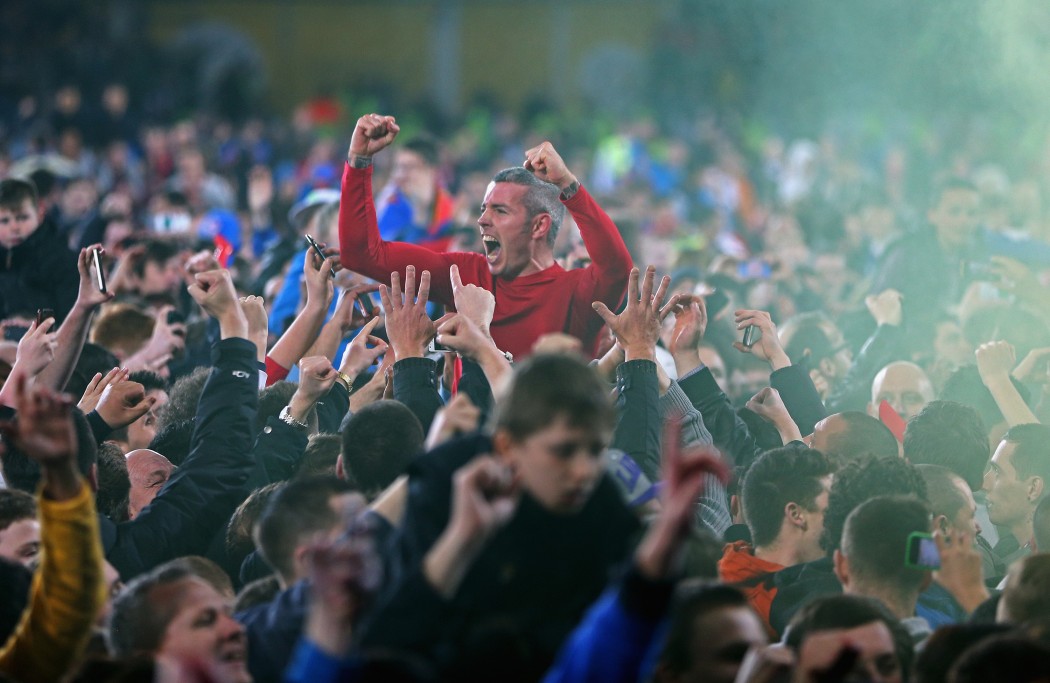By Connor Sliman, Staff Writer
Football, the beautiful game, known in the United States and Canada simply as soccer. Long considered one of the backwaters of the sport, Canada is seeing a marked increase in soccer’s popularity both at the club and national levels. To see the evidence of that, one need only look to the resounding success of the FIFA Women’s World Cup held across Canada just this past summer. Fifty-four thousand fans packed BC Place Stadium in Vancouver to watch the Canadian Women’s team play against England; despite the loss, another fifty-three thousand fans attended the World Cup Final between the United States and Japan. Unfortunately, the Canadian Men’s National Team (CMNT) has been a habitual disappoint to both fans and patriots alike. Les Rouges have not visited a world cup since their sole berth in 1986, which culminated in a hasty exit from the group stage.
Despite the men’s team’s performances, supporters of the beautiful game in this country have coalesced around newly minted clubs in Major League Soccer (MLS) based in Toronto, Vancouver and Montreal, as well as the North American Soccer League (NASL) in Edmonton and Ottawa. These clubs have provided a local avenue for support of the game that has drawn fans to it with gusto. However, it isn’t the casual fans showing up to the occasional game that draw the headlines or the cameras, it’s the supporter sections. Clubs in their own right, involved in the politics that inevitably associates itself with this sport, these supporter groups strive to be the loudest and proudest in the stands.
These groups are immediately identifiable in the stands due to the flurry of flags, signage, coloured smoke and TIFO’s, large fabric murals depicting homages to the club and the defamation of their rivals. The Montreal Ultras, occupying section 132 of the Montreal Impact’s Stade Saputo, are one such group. They have been faithfully supporting the Impact since their founding in 2002. This group has watched their team advance from the NASL after being awarded a franchise in MLS in 2012. Though to be sure not many of them would have guessed that three short years later they would be cheering on a global soccer legend like Didier Drogba.
These groups operate separately from the club front office, with this comes an inherent tension between club and supporters that is exceptionally prevalent here in Montreal. The Ultras have had numerous clashes with the front office that has included TIFO’s protesting the decisions of both coaches and owners. These standoffs have resulted in the controversial decision to remove privileges for banners and pyrotechnics in the past. The ultras have also been involved of late in a battle for supremacy with a rival supporter group, 1642MTL. This group introduced a five-foot-tall bell, an homage to Montreal’s nickname of “the city of one hundred steeples”, a moniker that was introduced by visiting novelist Mark Twain; it’s doubtful that Mr. Twain expected this to be incorporated into soccer supporter culture in the city. This bell has become a local icon, having been attended by local celebrities such as mayor Denis Coderre as well as MMA legend Georges St-Pierre.
These groups are more than just the sections they occupy however, they’re close-knit groups of individuals drawn together by a shared love of the game. Most have a bar or café that they meet up at before and after games. The Vancouver Whitecaps for example call Doolin’s Irish pub home, meeting there before marching en masse to the stadium, with much accompanying fanfare. Ultimately, these groups are able to create a buzz both within themselves as well as the stadiums that reflects their shared dedication to supporting their clubs. There is also a great deal of emphasis placed on winning supporter-owned hardware. Trophies like the Supporter’s Shield, awarded to the team with the best regular season record in MLS, or the Cascadia Cup, fought over fiercely between Vancouver, Seattle, and Portland provide incentives to perform on the pitch, as well as a tangible link between the team’s success and that of the fans.
With the increase in attendance and quality of play year-over-year in MLS it has started to become a breeding ground for CMNT talent through the establishment of academy systems. The past two Rookie of the Year winners in MLS have both been Canadians, who have both since played regular minutes for Canada. As such there’s a certain overlap between the league and the national team that is mimicked by these supporter groups with many supporters of these clubs ‘double-dipping’ with the national team.
Though Canada has never been considered anything more than a minnow with regards to global soccer, there is without a doubt reason to be hopeful for its future in this country. The growth of clubs and academies across the country, as well as the rumoured inception of a Candian Premier League to expand in cities without professional clubs all seem to be steps towards development. The supporters of these teams have witnessed the triumphs and failures of their clubs and national teams both on and off the field. It would seem that the present steady growth of the game in this country is finally paying dividends for supporters; they’re being rewarded for the perseverance with better talent on the pitch and larger crowds in the stands. The upward trajectory of Soccer and the growth of supporter culture in Canada seem like things all fans of the beautiful game can cheer for.


